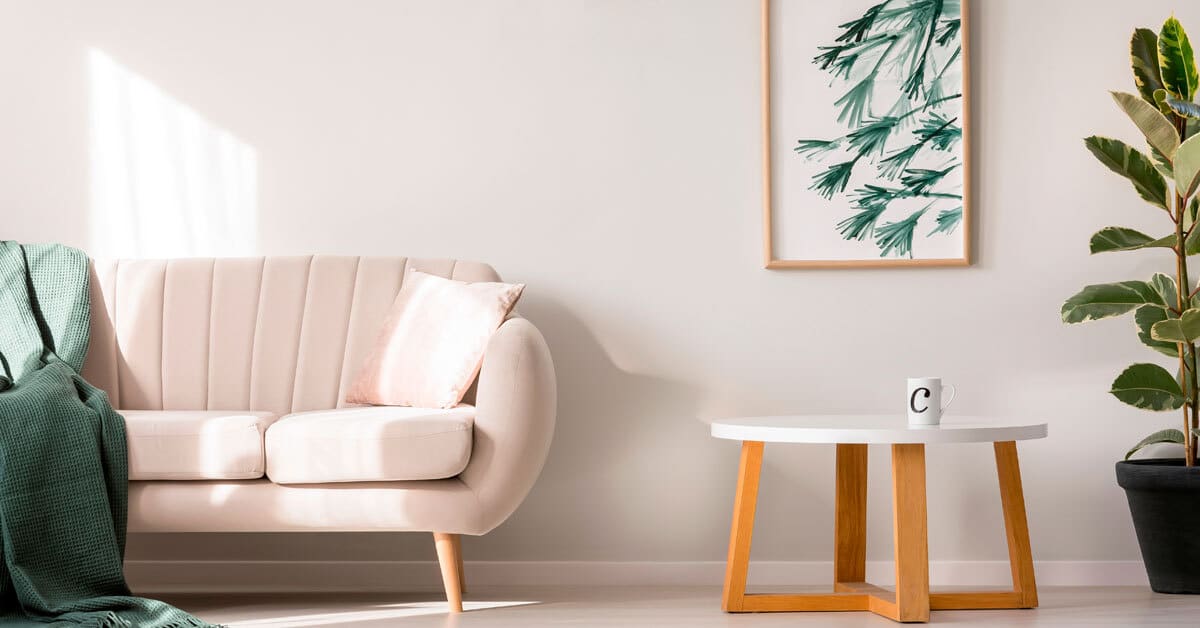A potential homebuyer usually has three key things in mind when viewing an apartment: the general condition of the property, its location and the price.
Although there are things you cannot change about a house you want to sell ,like its location for instance, you still need to make sure you get the best possible price for it.
The best option you have is to improve the interior of the house and make it more attractive for potential buyers.
This is where home staging comes in as an excellent tool for selling your house quickly.
This marketing technique allows you to easily improve your house by making it look bigger, brighter, fresher and cleaner and, most of all, more inviting and charming.
Using this approach, anyone visiting your property will be able to imagine themselves living there and want to make an offer!
Home staging: what is it and why is it important?
The definition of home staging is pretty simple: it is a technique aimed at giving a potential buyer an idea of how furniture can be arranged and how they might use the available space.
There are three important points at the heart of home staging:
- Unlike with an empty property, it gives your buyer a better overall vision of space, its brightness and potential furniture arrangements.
- It is essentially a marketing tool for selling your property quicker.
- You will need the support of a professional to avoid any mistakes in the implementation.
Home staging is vital as an empty house will not show possible buyers the true potential of the property, a disadvantage that might keep your house on the market for a long time.
It can be challenging for a buyer to understand the true potential of a house, and that is why most people end up judging property based on its location and size alone.
This can be detrimental for a seller because, as we all know, even small homes can offer the right solutions to all kinds of buyers.
Home staging will give your home that ‘X Factor’, be it a specific interior design scheme, the selection of furniture, or the enhancement of the property’s unique features.
Every property gives a distinct feeling to a buyer, and home staging will help you transform a ‘normal house’ into something a bit more special.
Types and costs of home staging
Home staging is a ‘mise en scène’—a backdrop for the property’s potential, capable of highlighting its major characteristics.
While visiting an empty house can be uncomfortable, especially when trying to understand how the space could be used, showing an already furnished house could hide the true potential of the property.
How does home staging work, and what are your options and costs?
Home staging is usually divided into two main approaches:
- Home staging an empty property: a professional will hire furniture and appliances for your house. They will set everything up, including furnishings, to make the rooms more appealing. It is important to bear in mind that this type of work will entail additional transport, installation and labour costs.
- Home staging a furnished home: selling a property ‘as is’ with the existing furniture will be less expensive in the end, but your approach will have to focus on removing items and making the house as neutral as possible. At significantly lower costs, a professional home stager could bring additional furniture and accessories to improve the result.
Home staging is a technique that can be adapted to a property’s characteristics for the best results. But remember, always work with professionals and avoid a DIY approach!
Home staging: furnishings, cleanliness and tidiness
We already talked about furnishings but home staging is not just about rearranging the furniture—it addresses other details that are crucial for selling property.
To improve a buyer’s perception of the space, while also keeping in mind their individual aesthetic preferences, it is also important to:
- keep the property clean, tidy and make sure it has a pleasant smell,
- add exciting features like paintings, shelving and bookcases,
- enhance lighting points or create new ones with lamps or chandeliers and avoid dark corners,
- add visually pleasing objects like vases, plants and flowers,
- repaint the walls,
- use soft materials for carpets, covers and curtains, and
- use air fresheners, scented candles and fresh laundry.
These suggestions are also important for furnished houses.
If this is the case, you will need to ‘declutter’, eliminating large and cumbersome items that could detract a possible buyer’s attention from the true potential of your house.
Having started on the West Coast in the 1970s, Home staging is now a well-established technique in the US.
Over the last few years, the technique has become more and more popular outside the US, even if there are only a few companies specialising in the approach.
We hope you found these suggestions about home staging useful and that they will help you use this marketing technique to sell your property.

